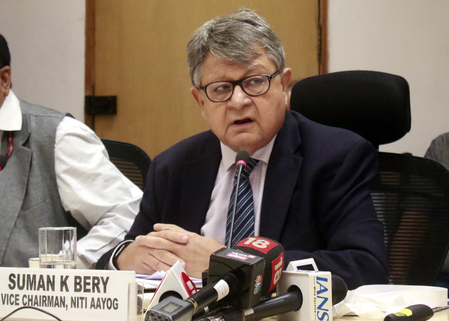New Delhi, 26 May (IANS). NITI Aayog released a report on Monday, introducing a wide six-point roadmap to convert India’s medium enterprises into future development engines.
The report highlights that the medium enterprises constitute only 0.3 percent of the country’s MSME, but their contribution to the export of the region is 40 percent.
A framework for the interventions targeted to unlock the full capacity of medium enterprises has been prepared.
The report deeply discusses structural disparity in the MSME sector, which contributes about 29 percent in India’s GDP and 40 percent to exports. Also employs more than 60 percent of the workforce.
Despite its important role, the structure of the region is unevenly weighted.
The report states that 97 percent of the registered MSMEs are micro enterprises, 2.7 percent small and only 0.3 percent medium enterprises.
The report underlines the major challenges faced by medium enterprises, including limited access to customized financial products, limited adoption of advanced techniques, insufficient R&D support, sectoral testing infrastructure deficiency and mismatch between training programs and enterprise requirements. These limitations obstruct their scale and innovation capacity.
To address these issues, the report has a comprehensive policy outline with targeted interventions in six priority areas.
These include the introduction of a working capital financial finance scheme related to the enterprise turnover, the credit card facility of Rs 5 crore at market rates and quick fund distribution mechanisms through retail banks under the supervision of the Ministry of MSME.
To promote the adoption of industry 4.0 solution, upgrading existing technology centers to region-specific and regional India SME 4.0 qualification centers.
The establishment of a dedicated R&D cell within the Ministry of MSME, taking advantage of the self-sufficient Bharat Fund for cluster-based projects of national importance. Development of field-centered testing and certification facilities to make compliance easier and increase product quality.
Connecting skills programs with enterprise-specific requirements according to the region and region, and integration of medium venture-focused modules in existing entrepreneurship and skill development programs (ESDP).
The construction of a dedicated sub-portal within the enterprise platform, including the plan discovery tool, compliance aid and AI-based assistance, to help the enterprises effectively navigate resources.
The report emphasizes that unlocking the capacity of medium enterprises requires the inclusive policy design and change towards the collaborative regime.
With strategic support in finance, technology, infrastructure, skills and information, medium enterprises may emerge as the driver of innovation, employment and export growth. This change is important to realize the vision of ‘developed India-2047’.
-IANS
SKT/ABM






